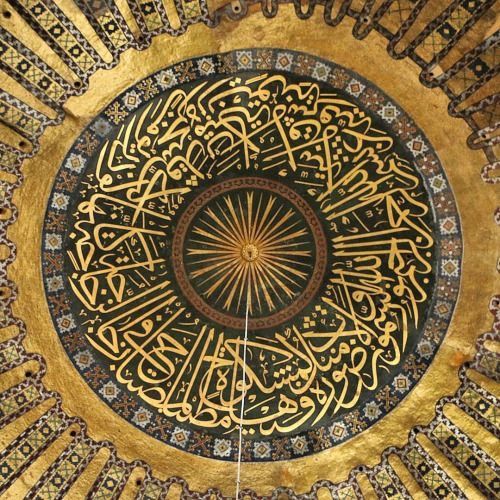How does the Qur’an address the issue of Muslim woman’s veil or “Hijab”?
The question of Hijab or the veil is currently one of the most controversial issues in both in the Muslim country and the West, where it causes collective hysterical paroxysm. The issue of the "veil" is undoubtedly the core of a very intricate subject linked -in a fairly confusing way- to various concepts such as tradition, modernity, freedom, women's body, tragedies of identity and the challenge of living together in multicultural societies.
All the discussions on this topic have the merit of reveal two major contemporary issues. The first one is related to the increasingly important visibility of Muslim women in the West, and hence, the position of Islam in these societies as they undergo a process of identity construction. The second one is in the Muslims society’s where "the veil" issue has revealed the existence of a deep and serious identity crisis driven by an intensive "emotional support" of the veil as a symbol of the Muslim identity.
But beyond the question of the right to claim the “veil” and its religious legitimacy, we should first go back to the Qur’an to see how the sacred text addresses this issue along with the terminology used in relation with the ethical clothing of women.
At first, it is important to highlight the idea that the term "Hijab", which is frequently used, does not absolutely mean what is supposed to be the scarf that covers the hair of Muslim women. Nowhere in the Qur'an has the term hijab reflected this meaning. And the semantic and conceptual interpretation of the Qur'anic term Hijab shows the opposite of what is supposed to be in reality.
The term “Hijab” is reiterated seven times in the Qur'an referring each time exactly to the same meaning. “Hijab” means curtain, separation, wall and, in other words, anything that hides, masks and protects something[i].
But the verse that has been most often used to prove the "obligation" of veiling for women and that mentions the term Hijab is the following: " O you who have believed, do not enter the houses of the Prophet except when you are permitted for a meal… And when you ask [his wives] for something, ask them from behind a separation (Hijab)" Quran 33; 53.
As indicated here, the Hijab concerns only the wives of the Prophet and meets a circumstantial requirement in order to respect the private life of the Prophet. Besides, it does not represent, in any way, a particular model of clothing. The essence of this requirement aimed, mainly, to educate Arabs of that time to respect the privacy of people and good manners.
It is therefore quite clear that the term Hijab does not absolutely refer to the meaning given nowadays as the scarf that should cover the head. The Hijab has nothing to do with any Islamic female dress. It is rather a symbol of separation between public life and private life at the time of the Prophet. It aimed to make of the prophet's wives Mothers of the Believers.
There is another verse that mentions a term that stands for the scarf. This verse says: "... And tell the believing women to reduce [some] of their vision and guard their private parts and not to expose their adornment (zinatahuna) except that which [necessarily] appears thereof and to wrap [a portion of] their headcovers (Khumurihina) over their chests (Juyubihina) and not to expose their adornment except to their husbands, their fathers, their husbands' fathers, their sons, their husbands' sons, their brothers, their brothers' sons” Quran 24;31
The term Khumurihina (plural of Khimar) stated in this verse refers to the scarf that women used to wear in the Arabian Peninsula and in all the other civilizations at that time.
The Qur'an invites the believing women to fold their scarves (Khimar) over their chests (Juyubihina) to cover the upper part of their busts when they are in public. In fact, the classical commentaries report that the Arab women of Mecca used to uncover their neck and upper chest. For this reason, the Qur’an invited the believing women to fold the sides of the Khimar over their busts.
The majority of Muslim scholars and exegetes agreed that the believing women must cover their hair by putting on a Khimar and leave only their faces and hands uncovered in the presence of men who do not have a direct family relationship with them.
Since there is a difference between Hijab and Khimar, we have the right to ask why do we keep using the term Hijab for what has been named in the Qur'an scarf or Khimar?
This error is currently made unwillingly and mostly reproduced unconsciously, but it is worth mentioning that this semantic shift was not made innocently or casually throughout the history of the Islamic intellectual production.
The semantic shifts are usually the result of incorrect translations and interpretations and socio-cultural factors, which aimed at one point in history to create "made-to-measure" concepts to serve the political interests. And this is what happened with Hijab when it was imposed on Muslim women by inserting it willingly in the register of Islamic body ethics.
When we go back to the origin of the term Hijab, which means to "hide" or "separate", and notice the changing process that it has undergone to bear the name "scarf", we have the right to wonder if this concept was given this double meaning to religiously justify the isolation of Muslim women.
The "Hijab" was imposed on Muslim women as a way of "separation" in order to show them their place in society, and exclude them, in the name of Islam, from the socio-political sphere. Thus, replacing the Khimar with Hijab means to confuse different and opposing semantic and conceptual fields in order to endorse, in the name of Islam, the exclusion of women from the sociopolitical space behind a curtain!
Indeed, to substitute the Khimar with the Hijab is to confuse two different registers. While Khimar remains, according to the Qur’anic vision, a sign of women’s social visibility, Hijab undoubtedly symbolizes their relegation to the private space.
In fact, the first Muslim women put on the Khimar as part of the Qur’anic message of liberation and a symbol of dignity. This global vision and the holistic approach of the spiritual message of the Qur'an are important and even essential to understand the deep meaning of these verses.
It is not the Khimar -that existed before revelation- which is important, but rather its new meaning and the context in which it was revealed. The Khimar, according to its original meaning of women's liberation and as a symbol of their participation along with men in the socio-political space, was therefore gradually replaced by the other Qur'anic concept of Hijab to prevent women from participating in the social field.
By considering Hijab as sacred and disregarding the Islamic vocabulary of Khimar, a new Islamic social code is invented to endorse the separation of men and women.
By "veiling" women, they will lose all the rights acquired at the advent of Islam. And the "veil" or Hijab will remain the single powerful indicator of the deterioration of Muslim women’s legal status, since they will be secluded and excluded from the public space, in the name of this symbol...
Finally, the confusion between Khimar and Hijab is politically delicate and serves, above all, the interests of different ideologies including radical Muslims, supporters of the official Islam of states and the modern Islamophobia which joyfully criticizes the "veil" or Hijab considered today as the banner of Islam...
Unfortunately, the whole Qur'anic ethics seem today to be reduced to women’s dress and body, to the way they should be covered, the color, thickness and uniformity of the dress ... However, given that the Qur’an did not insist on a specific clothing or appearance for women, it would be very simplistic to analyze the few verses on the dress far from the guidance of the spiritual message about the global body ethics for both men and women.
The Qur'an invites both men and women to behave with "decency" and "integrity", both physically and morally. The Qur'an does not legislate a strictly religious "uniform" as it is shown here, and the first spiritual message did not intend to stipulate rigid or "fixed" dress standards once and for all, but rather to "recommend" an "attitude" or an "ethic" regarding the body and soul.
But it is really unfortunate that the first intention of the spiritual message of Islam is often neglected or completely ignored at the expense of a literal reading which keeps no more than "the obligation of wearing the Hijab” out of all the Qur'anic teachings about women! This contradicts the principles of the spiritual message and its spiritual ethics.
The question of Khimar or scarf is not part of the pillars of Islam, but rather of moral values, behavior and relational ethics.
The religious faith is meaningful only when it is practiced without pressure. Therefore, speaking about the obligation of Islam to wear a headscarf or Khimar is spiritually unacceptable because the Qur'an said: "No compulsion in religion." It is one of the main principles of Islam.
Reducing the whole global Qur'anic body ethics to the so-called "veil" is to stand against the same message. And this is exactly what happened in the Islamic history by focusing on woman’s dress, and the obligation to "hide" and "conceal "her body. As a result, this spiritual symbol has become a sign of oppression in the Muslim world.
It is therefore clear that the verses aim to encourage men and women to be free from and overcome materialism and codes of seduction of each era, which is a reflection of the dominant ideologies recurring throughout the history of the human civilization.
The Qur'anic injunction calls upon men and women to behave with decency and respect as indicated in this key verse: “… But the clothing of righteousness (libass a-Taquwa) – is the best” ... Besides, this verse solely highlights a concept that should be taken into account today in the chaos of ultraliberal consumption and exuberance…
[i] Verses in which we find the word Hijab: 7 ; 46, 17 ;45, 19 ;17, 38 ;32, 41 ;5, 42 ; 51 , 33 ;53 and 17;45.
July 2019
Dr Asma Lamrabet
À propos de l'auteur

ASMA LAMRABET
Native de Rabat (Maroc), Asma Lamrabet, exerce actuellement en tant que médecin biologiste à l’Hôpital Avicennes de Rabat. Elle a exercé durant plusieurs années (de 1995 à 2003) comme médecin bénévole dans des hôpitaux publics d'Espagne et d’Amérique latine, notamment à Santiago du Chili et à Mexico.






